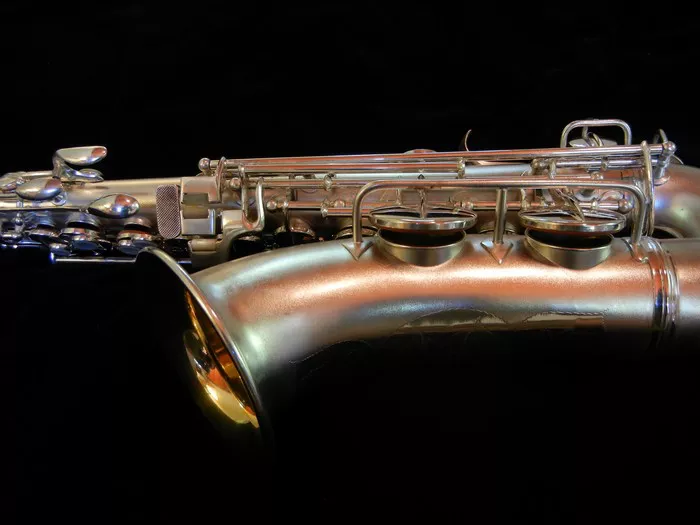The allure of saxophone music is undeniable, but the full-size saxophone can be quite intimidating for beginners. Mini saxophones offer a more approachable entry point into the world of this enchanting instrument. With their compact size and simplified design, mini saxophones provide an excellent platform for beginners to learn the basics of saxophone playing. In this article, we will explore how to play a mini saxophone for beginners, helping you embark on a journey of musical discovery.
Choosing the Right Mini Saxophone
Before delving into the art of playing, it is essential to select the right mini saxophone. These miniature versions of the classic saxophone come in various designs and materials. One popular option is the “pocket sax,” which is known for its portability and ease of use. Other options include plastic and metal mini saxophones. Your choice of mini saxophone largely depends on your personal preferences and budget.
Assembly and Maintenance
Once you have your mini saxophone in hand, it’s time to assemble and understand its components. Mini saxophones are typically composed of three main parts: the mouthpiece, the neck, and the body. The mouthpiece is where you blow into, the neck connects the mouthpiece to the body, and the body contains the finger keys and tone holes. Make sure to follow the manufacturer’s instructions for assembling your mini saxophone correctly.
Proper maintenance is crucial to ensure the longevity of your instrument. After each practice session, clean your mini saxophone by gently swabbing the inside with a soft cloth or mini saxophone-specific cleaning tools. This prevents the buildup of moisture and debris, which can affect the instrument’s sound quality and playability.
Embouchure and Breath Control
To produce a beautiful sound on your mini saxophone, you need to master your embouchure and breath control. The embouchure is the way you position your lips and tongue when blowing into the mouthpiece. Start by placing your lips around the mouthpiece and blowing gently to create a sound. Experiment with different lip positions to find the one that produces the best tone.
Breath control is equally vital. Ensure you take deep breaths and use your diaphragm to control the airflow. A steady and controlled stream of air is essential for playing the mini saxophone accurately. Practice maintaining a consistent tone by varying your breath pressure and experimenting with different dynamics.
Finger Placement
Understanding finger placement is essential for playing melodies on your mini saxophone. The finger keys on a mini saxophone are designed to mimic the fingerings of a full-size saxophone. To get started, learn the basic finger positions for playing notes and scales. As a beginner, you can find helpful fingering charts or guides online or in instructional books. Regular practice and repetition will help you become more comfortable with finger placement and transition between notes.
Learning to Read Music
While it is possible to play the mini saxophone without reading sheet music, learning to read music will significantly enhance your playing abilities. Familiarize yourself with musical notation and practice reading simple songs and melodies. This skill will open up a world of musical possibilities and enable you to play a wide range of songs on your mini saxophone.
Ear Training and Listening
Developing a good ear for music is an essential skill for any musician. Listen to a variety of saxophone music, paying close attention to the nuances in tone and style. Try to replicate the sounds you hear on your mini saxophone. This will not only improve your ability to play by ear but also enhance your musicality and creativity.
Practice, Practice, Practice
The key to mastering any musical instrument is consistent practice. Set aside regular practice sessions to hone your skills on the mini saxophone. Start with simple exercises and scales and gradually progress to more complex songs. Recording your practice sessions and listening to the playback can help you identify areas for improvement.
Seeking Guidance
If you’re serious about playing the mini saxophone, consider seeking guidance from a professional saxophonist or music teacher. They can provide valuable insights, correct your technique, and offer personalized guidance to help you progress faster.
Join a Community
Joining a community of fellow mini saxophonists can be a great way to stay motivated and learn from others. You can find online forums, social media groups, or even local music clubs where you can connect with like-minded individuals who share your passion for this instrument.
See Also: The Cost of Saxophone Reeds: A Full Guide
Final Thoughts
Playing a mini saxophone can be a rewarding and enjoyable experience, even for beginners. With dedication, practice, and a passion for music, you can unlock the melodious world of mini saxophones. Start by choosing the right instrument, mastering embouchure and breath control, learning finger placement, and reading music. Regular practice, ear training, and seeking guidance from experts will help you on your journey to becoming a skilled mini saxophonist. So, pick up your mini saxophone and begin your musical adventure today!


